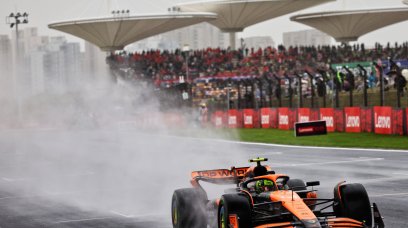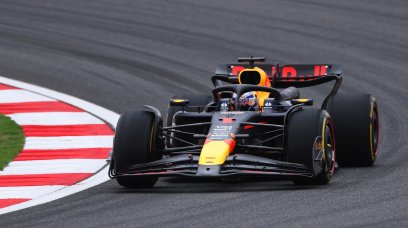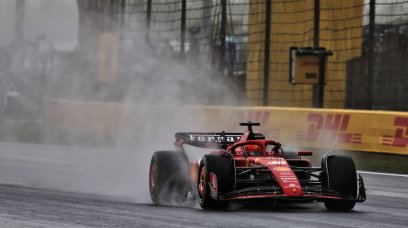At the Belgian Grand Prix, Technical Directive 39 will finally come into force, with the express purpose of placing stringent limits on floor plank flexibility and wear. This had been exploited by F1 teams earlier in the 2022 season to increase the load generated by the floor, bringing significant performance benefits. The new rules, ratified by the World Motor Sport Council this week, mainly redefine the methods of checking the level of wear to the plank at the end of a race. The basics of the plank flexibility test are unchanged: the car is suspended on three supports – at a diameter of 70mm – in relation to the verification holes, whose position is prescribed by the regulations. The corresponding deformation cannot exceed 2mm. Furthermore, a minimum stiffness has been defined for the first time. In practice, a deflection of no more than 1mm is the limit for every 1.5 tonne of load applied, equivalent to a minimum stiffness of 15 kN/mm.
Keeping an eye on floor flex and wear
Under the new wear control criteria for the plank, initial thickness is limited to 10mm, while post-race this will drop to 9mm. Up to now, tests have been carried out in conjunction with the six verification holes in a predetermined position, checking the internal thickness of the skid block. From Spa-Francorchamps onwards, this will be extended to the area adjacent to the holes. Variable stiffness of the material will no longer be permitted. Instead, it must be constant between the different areas of the plank. Tricks that teams have used to limit wear along the contours of the measuring holes will not be allowed. The checks will be based on physical inspections, with the support of CAD design files and (virtual structural) Finite Element analysis. The FIA's new procedures suggest that, until now, some teams have adopted planks with discontinuous density and flexibility along the entire length. By adopting the aforementioned strategy, especially in the area surrounding the inspection holes, the skid block's greater compliance reduces the impact from and effects of porpoising, allowing teams to lower the car's ride height. This is a fundamental parameter, since a car's floor is impacting the ground much more frequently in F1's new ground effect era, especially the rear two thirds. Therefore, flexibility is decidedly strategic. Levels have also been far greater than those seen in 2021.
Getting into the details of F1's rule changes
In detail, the changes concern Article 3.15.8 of the technical regulations, whereby a certain level of stiffness around the measuring holes has been added, equal to at least 90 per cent of the highest value measured in this area. "Competitors will be required to demonstrate the local vertical stiffness and design installation of the skids and plank to the FIA for the regions around the periphery of each of these three holes," reads the article. "Compliance with Article 3.5.9.e. will only be assessed in the regions that are at least 90 per cent as stiff as the stiffest part of the periphery. Any designs intended to protect these regions of the periphery from wear will not be accepted. "Competitors will be required to demonstrate compliance with these provisions by way of a detailed inspection of both the CAD and the physical installation, as well as Finite Element analysis." Article 3.5.9.e, mentioned above, already existed in the previous version of the regulations and established the maximum wear allowed for the plank. "The thickness of the plank assembly measured normal to the lower surface must be 10mm + 0.2mm and must be uniform when new," it reads. "A minimum thickness of 9mm will be accepted due to wear, and conformity to this provision will be checked at the peripheries of the designated holes."
Will the rule changes mix up the order?
Mercedes driver George Russell stated at the Hungarian Grand Prix that he saw the anticipated changes as an opportunity for his team to close the gap to the front of the field. "There is no doubt that Ferrari and Red Bull have pushed the regulations in that regard, and we have sort of respected it as the regulation was intended," he told Sky Sports F1 . "There's no guarantee; every car is different, but it's not going to help them, that's for sure." When cars hit the track again in Belgium in just over a week's time, the first answers to the many questions over F1's latest hot topic should emerge...
Most read




















